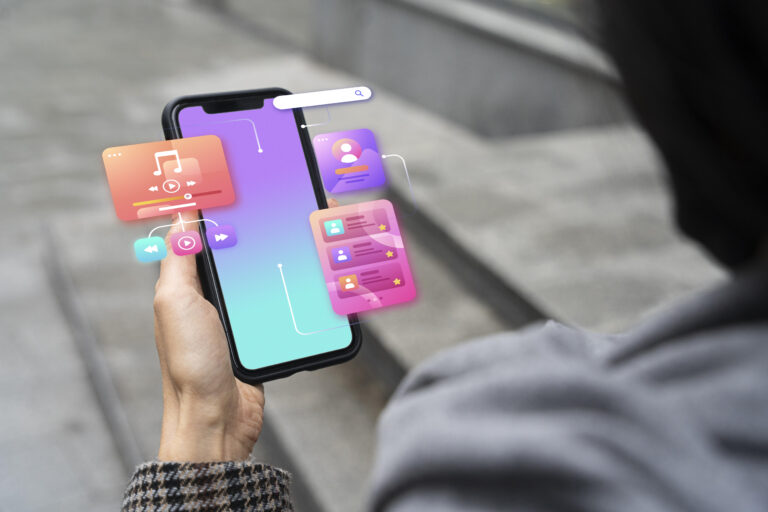Not every app works flawlessly on new flagship smartphones. Many people still use older devices with limited computing power, less RAM, and outdated operating systems. So how can you optimize a mobile app to run smoothly even on lower-end phones? Here are the key techniques worth implementing.
In today’s world, where the number of users with older devices is growing and modern apps are becoming increasingly demanding, it’s important for developers to understand how to effectively adapt their products. This article presents not only optimization techniques but also examples of success stories and challenges developers face in this area.
Mobile app optimization affects not only performance but also user satisfaction. Users expect apps to run smoothly regardless of their device. That’s why it’s worth investing time in research and development to find the best solutions. In the following sections, we’ll discuss specific use cases and tips that might prove helpful.
1. Minimizing RAM Usage
Older phones often have limited RAM, which can cause apps to run slowly or be closed automatically by the system. To prevent this, developers should use various optimization techniques to reduce memory usage. For example, apps should minimize the amount of data stored in memory and regularly clear unused elements.
A good user interface doesn’t just attract attention—it also enhances the user experience. It’s essential to design the UI with the limitations of older devices in mind. For instance, some apps use simpler animations while maintaining an appealing design. Also, ensure UI responsiveness so users don’t have to wait for feedback from the system.
- Avoid storing large data structures in memory—use pagination or lazy loading instead.
- Limit the number of concurrently running threads and avoid frequent memory allocations that may cause fragmentation.
- Monitor and eliminate memory leaks using tools like Android Profiler (Android) or Instruments (iOS).
2. User Interface Optimization
An example could be a photo viewing app that uses lightweight animations and transitions without overloading the processor. This allows users to enjoy smooth performance even on older devices.
Advanced visual effects can significantly burden older devices. To boost performance, pay attention to details. For instance, testing your app on different smartphone models will reveal which effects are unnecessary and which are worth keeping. Only use animations where they make sense and enhance user interaction.
- Reduce the number of animations and transitions. If needed, cap their frame rate at 30 FPS.
- Avoid transparency and dynamic shadows, which can overload the GPU.
- Use vector graphics instead of large bitmap files to reduce memory usage and improve rendering speed.
Asynchronous programming is crucial for reducing CPU load, allowing better responsiveness to user actions.
Also, consider using local databases to reduce server queries and improve app speed—especially important for older device users.
3. Reducing CPU Load
Optimizing app code helps lower CPU usage, which is critical for smooth performance on older devices. Proper coding practices can lead to significant CPU savings. Be sure to test code performance to identify areas for improvement. Examples include code refactoring and removing unnecessary operations.
- Avoid performing complex operations on the main thread—move them to background threads using Kotlin Coroutines (Android) or GCD (iOS).
- Minimize the use of reflection in Java/Kotlin, as it’s slower than direct method calls.
- Use computational optimizations, such as reducing operations on large datasets or using caching.
4. Optimized Network Communication
Apps often consume many resources communicating with servers, which can slow down performance on weaker devices or slow networks.
- Reduce the number of API calls by combining multiple requests into one.
- Use local caching (e.g., Room database for Android or UserDefaults/Core Data for iOS) to store frequently used data.
- Use WebSockets instead of frequent HTTP requests to reduce data transfer and improve efficiency.
5. Minimizing App Size
The smaller the app, the faster it installs, loads, and consumes fewer system resources. To reduce size, focus on analyzing your app’s structure and requirements. For example, avoiding large libraries in favor of smaller, native solutions can positively impact the final app size.
- Remove unnecessary language resources using the
resConfigsparameter in Gradle to include only the required languages. - Compress images using the WebP format instead of PNG or JPG.
- Avoid heavy libraries—check if they can be replaced with lighter alternatives or native implementations.
- For Android, use Android App Bundles to deliver only the necessary files tailored to each user’s device.
6. Testing on Older Devices
Regular testing on various devices helps detect performance issues and adapt the app to lower-spec hardware.
- Test the app on real older smartphones and on emulators with limited CPU and RAM.
- Simulate poor network conditions to see how the app behaves under stress.
- Use tools like Android Profiler (Android Studio) and Xcode Instruments (iOS) to analyze resource usage and eliminate performance bottlenecks.
Conclusion
Optimizing a mobile app is key to ensuring smooth performance on older devices. Regular performance analysis helps tailor the app to user needs. The applied techniques show that thoughtful changes can significantly improve app behavior—even on low-spec hardware. This broadens your user base and enhances user experience, which is invaluable in today’s competitive mobile app market.
Improving memory management, reducing CPU load, optimizing networking, and minimizing app size will help you reach more users and improve engagement.
If you want your app to run smoothly on every device, contact us—we’ll help optimize your project!
Have you encountered performance issues on older phones? What solutions worked for you? Share in the comments!







